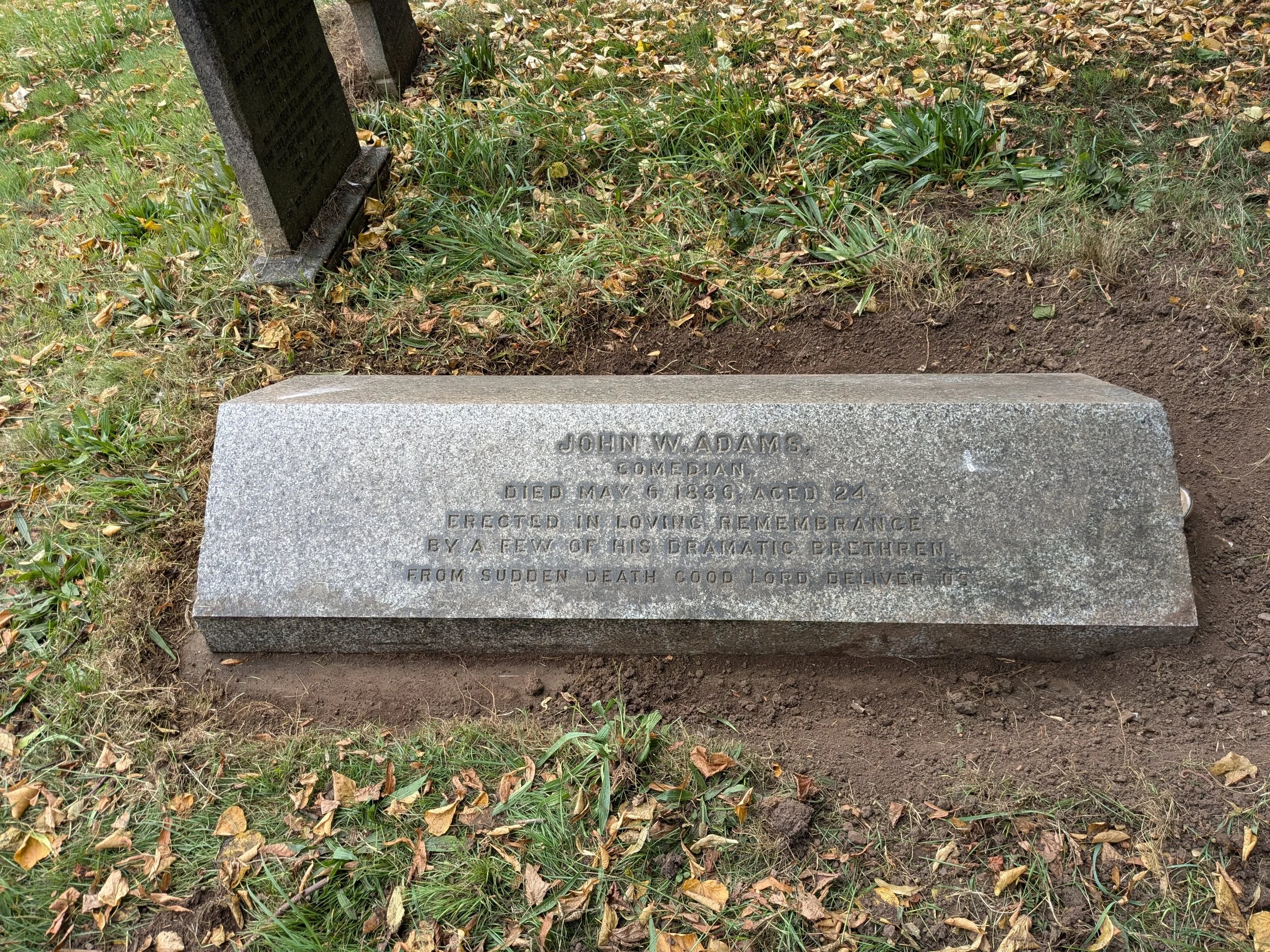John Adams
Two people, died at the Grand Theatre, 9 Babington Lane, Derby on 6th May 1886, when a fire broke out at 6:45pm after scenery in the stage flies caught fire from a gas batten. These were John Adams, an actor and James Loxley, a carpenter. John Adams died at the Infirmary, London Road where he was taken and James Loxley died at the theatre. Reports in the papers of the time, suggest that others died of their injuries including John William Evans of Bradford, a member of the theatre staff. The Grand Theatre had been opened on 25th March 1886 by the Mayor of Derby.
Newspapers contained detailed reports of the tragedy. A public meeting was called by the Mayor to set up a fund to help those affected by the fire. Many initiatives took place to raise money including Derby County holding a football match on 11th May, admission 3d. The fund enabled James Loxley’s body to be taken to his widowed mother in Frome, Somerset and pay for his funeral.
The inquest on John Adams and James Loxley determined that the cause was an accident after cloth came in contact with a gas light. Insufficient water was available to put out the initial fire. There were no full buckets of water around the theatre and only four fire hydrants. A hose could not be attached on the hydrant near the stage and the others had insufficient water pressure.
John Adams was buried in Nottingham Road Cemetery. Mr. Edward Terry’s Comedy Company, who were booked to perform at the theatre, had only arrived that day from Coventry for a three night’s engagement. John Adams was to be a comic actor in the farce to be played. The streets of Derby were lined with people paying their respects as the funeral cortege, consisting of a transparent hearse and nine mourning coaches, preceded by two combined bands playing sacred music, travelled the mile and half to the cemetery from the funeral home.
The newspapers of the time reported that the service at the cemetery was attended by thousands of people.
The Theatre had seated 2,200 and cost approximately £20,000 to build. All that remained after the fire was the façade and the walls. The building was insured. The theatre was rebuilt and reopened on 13th November 1886.
The theatre closed on 9th December 1950 and remained empty until purchased by Mecca on 11th December 1957. It reopened as the Locarno in 1959, over the years it became known under many names, Tiffany’s, Ritzy’s, Eclipse, Confetti’s, McCluskys. It became a Chinese restaurant (May Sum) and more recently the House of Holes.



